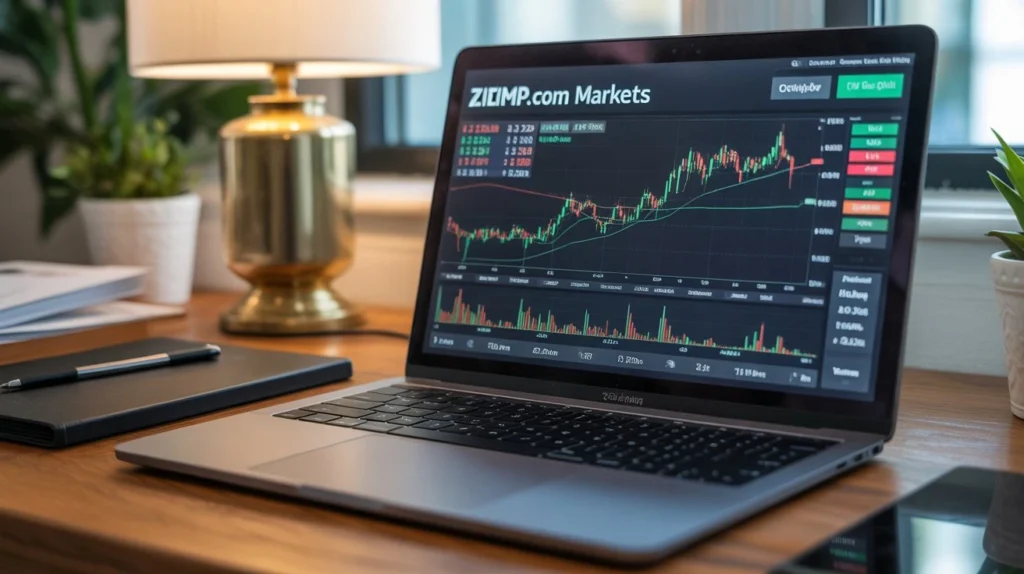Understanding ziimp.com markets matters deeply for anyone seeking to navigate today’s fast-moving digital trading and investment landscape. Whether you’re a seasoned investor or a curious newcomer, knowing how this platform functions, the opportunities it brings, and the pitfalls to watch can save time, money, and stress.
This article dives into the essence of ziimp.com markets, revealing what they are, why they matter, how to navigate them effectively, and how they stand in real-world contexts. Let’s begin with a clear, friendly overview that shows you value without overwhelming you.
What Are ziimp.com Markets?
At its core, ziimp.com markets refers to the collection of trading and investment opportunities offered via the ziimp.com platform. These can include stock-like instruments, commodity indexes, digital assets, or thematic funds, depending on how the platform is structured. The platform aims to make these markets accessible, offering transparent pricing, intuitive tools, and user-oriented information. Users expect real-time data, smooth execution, and clear support; understanding this defines the intent behind any search query tied to ziimp.com markets.
Why ziimp.com markets Worth Exploring
Exploring ziimp.com markets opens access to a blend of convenience and control. The benefits include:
- Transparent access to pricing and execution
- Educational tools supporting better decision-making
- Potentially lower costs compared to traditional brokers
These markets can be particularly beneficial for retail investors looking for user-friendly interfaces that deliver up-to-date data and prompt trade execution. Furthermore, if the platform supports diversification—whether across sectors, indices, or asset types—it strengthens portfolio resilience by giving users a smoother path to varied exposure. At the same time, transparency enhances trust and helps manage risk.
Key Challenges and Considerations
However, ziimp.com markets may carry challenges that any intelligent user must recognize. Platform-specific limitations could include:
- Liquidity constraints in thin or niche markets
- Fees and spreads that may not be obvious upfront
- Learning curves tied to unique interface or mechanics
- Regulatory and compliance nuances across regions
Recognizing these challenges early helps you avoid surprises. For example, limited liquidity can mean slippage—executing a trade at a different price than quoted—especially during volatile periods. Fee structures might hide in fine print, reducing your net returns. UI quirks may lead to errors if you’re used to other platforms. Finally, differing regulatory oversight by region could alter your rights or the protections afforded to your trades.
Real-World Examples of Using ziimp.com Markets
Let’s illustrate how real users might interact with ziimp.com markets. A mid-level investor, say Sara, might use it to trade thematic equity baskets such as clean energy or emerging markets, appreciating transparent pricing and the ability to set alerts for price movement. Meanwhile, a newbie like Alex might leverage educational guides and simulated trades to learn before committing real funds. On the other end, an expert trader, like Priya, may use the platform’s fast-execution engine to react quickly in news-driven markets, valuing low latency and direct chart integrations.
A Simple Step-by-Step Guide to Getting Started
Begin with exploration. Upon login, spend time browsing the user interface, understanding where to find market listings, price histories, and order entry panels. Grab hold of small opportunities to feel how the interface responds and how trade confirmations appear.
After acclimating, introduce strategy. Use alerts to signal movement, charts to identify trends, and educational content to deepen your skill. Keep your initial investments modest. As you grow more familiar with the platform’s rhythms and tools, adjust your approach and remain vigilant on cost metrics and execution quality.
Frequently Asked Questions
What exactly can I trade on ziimp.com markets?
You can trade a range of instruments depending on platform offerings—this could include equities, index-like bundles, digital assets, or thematic funds. Confirm directly via the tradable markets list.
Is ziimp.com suitable for beginners?
Yes. If the platform provides educational tools, simulated trading, and clear UI, beginners can learn effectively while minimizing risks.
How do fees and spreads work on the platform?
Fees and spreads vary; you’ll usually find explicit information in support sections or FAQ pages. Always check the “pricing” or “fees” area before placing meaningful trades.
Can I use alerts and charts on ziimp.com?
If it’s designed well, yes: alert features, chart overlays, and trend indicators help users act responsibly and with insight.
What risks come with trading on ziimp.com markets?
Risks include liquidity slippage, hidden fees, learning-curve errors, and regulatory limitations depending on your location.
How do I build confidence before trading large amounts?
Start small, use simulated trades or minimal-stake trades, leverage tutorials, test order mechanics, and only increase exposure when you fully understand the platform’s behavior.
Conclusion
In exploring ziimp.com markets, you gain not only access to potentially powerful trading opportunities but also the chance to do so with clarity, support, and flexibility. While the platform may come with learning curves and market limitations, thoughtful users can leverage its tools and transparency to build success. Now’s your moment: sign up or log into ziimp.com, explore available markets, test strategies carefully, and take your trading journey forward with confidence and insight.






